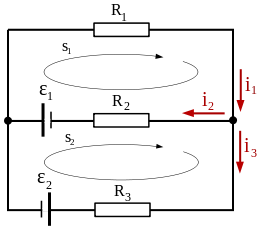KCL and KVL Assignment Help
KCL and KVL Assignment Help
www.assignmenthelp.net provides Assignment Help, homework help, project help, dissertation help or any other kind of online tutoring assistance. We provide KCL and KVL Assignment Help, electrical engineering homework help or electrical engineering Assignment Help. So submit your query to us, we are available 24*7 for your assistance. Our expert professional tutors provide help with electrical Engineering Courses. We provide 100% plagiarism free service.
KCL and KVL Tutor
We have excellent team of highly professional tutors for teaching KCL and KVL and its problems. Tutors for this topic are electrical engineers with masters and PHD degrees. They use latest advanced technologies to teach different difficult concepts to students. Tutors use such teaching methodologies so that students gain maximum interest in the subject.
KCL and KVL
Kirchoff’s current law (KCL): This law is known by many different names- Kirchhoff's first law, Kirchhoff's point rule, or Kirchhoff's junction rule (or nodal rule). According to the principle of conservation of electric charge – at any node, the sum of currents flowing into that node is equal to the sum of currents flowing out of that node. Or the algebraic sum of currents in a network of conductors meeting at a point is zero. Current is a signed quantity showing the direction towards or away from the node, hence this principle can be written as below. Where, n is total number of branches with currents flowing towards or away from the node. This law is based on conservation of charge where charge is the product of the current and time.
Kirchoff’s Voltage law (KVL): This law is known by many different names such as- Kirchhoff's second law, Kirchhoff's loop (or mesh) rule and Kirchhoff's second rule. Similarly to KCL, it can also be stated as:
The voltages may also be complex and in the above equation n is the total number of voltages measured. This Kirchoff’s voltage law is based on Maxwell-Faraday law of induction, which says that voltage drop around any closed loop is equal to the rate-of-change of flux through that loop. KVL states that loop voltage is zero. The Maxwell equations tell us that the loop voltage will be zero if the area of the loop is very small, the magnetic field is very weak or the magnetic field is very slowly changing.
KCL and KVL Example:
Assume an electric network consisting of two voltage sources and three resistors:
KCL and KVL Assignment Help Through Online Tutoring and Guided Sessions from AssignmentHelp.Net

According to the first law we have
![]()
The second law applied to the closed circuit s1 gives
![]()
The second law applied to the closed circuit s2 gives
![]()
Thus we get a linear system of equations in i1, i2, i3:
![]()
Assuming
![]()
the solution is

i3 has a negative sign, which means that the direction of i3 is opposite to the assumed direction (the direction defined in the picture).
KCL and KVL | KCL and KVL Assignment Help | Electrical engineering homework help | Electrical engineering Assignment Help | Electrical engineering project help | help with Electrical Engineering Courses.



